We are wearing pyjamas, as 2021 unfolds these dowdy and scruffy, and somewhat lazy fashion items was once at the very apex of fashion.
Marketing to potential wealthy visitors before the war that the Lido was “the beach of sunshine and pyjamas”.
Back then Lido was lovely and its sands and hotels were places where people could feel comfortable spending days and evenings relaxing and partying in a garment today associated with bedtime. It was an outdoor catwalk display of the very latest summer trends.
A convalescence or days lounging out on the sofa way back in the 1930s
Gabrielle “Coco” Chanel
French fashion designer Gabrielle “Coco” Chanel, decided to create oversize pyjama-style trousers complete with a loose-fitting shirt. Or a sleeveless top that was cool in summer.
Coco was all about revolutionising day wear that could combine elegance and comfort.
During this pandemic, I feel we have not even grasped yet as designers. daywear elegance but still being comfortable.
Elegance has been stored away and comfort has overtaken our lives.
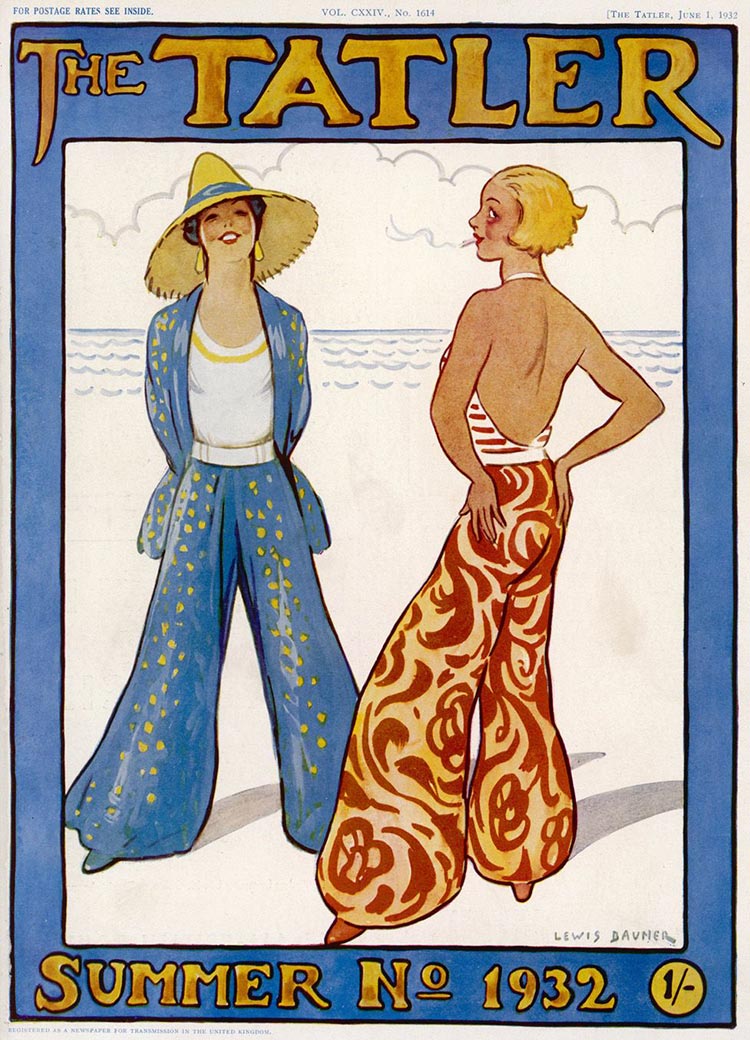
Dating back to 1918, she began wearing “beach pyjamas”.
Coco already ahead of the game created a gender-confusing suggestion of the boudoir. Shocking the world with such a display of equality towards the men.
Both men and women were left distressed but Chanel’s influence and boldness are why the beach pyjama became popular among rich women by the mid-1920s.
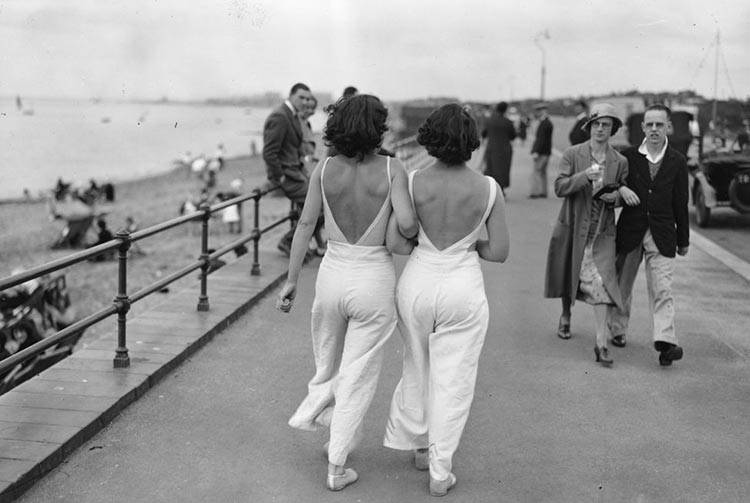
Juan-les-Pins on France’s Cote d’Azur
The up-and-coming resort of Juan-les-Pins on France’s Cote d’Azur marketed itself on being modern in the way beachwear was to be worn.
It became the destination of popularly known as “Pyjamaland” in English and “Pyjamapolis” in French, so commonly worn were they among its visitors.
Depending on your cash access many chose Chanel-style fashion pyjamas.
Others, seemingly for fun, spent their days outdoors in actual bedtime pyjamas, complete with a dressing gown.
In France, summers started at the beginning of spring and end at the end of autumn. So being stylish and comfortable was an essential part of an opulent lifestyle.
Fashion was a slow form of art back then.
” wrote the journalist Robert de Beauplan in 1931. “There, you can see women wearing strange dresses. It’s strictly speaking Pyjamapolis.” In the same year, Vogue magazine was advertising pyjamas as “woollen suits for the beach”.
Brightly Coloured Pyjamas
In 1932, two women wearing brightly coloured pyjamas caused a stir on Brighton UK seafront.
“Throughout the 1930s the styles spread further and could be seen lining the beaches of Britain, yet trousers for women remained somewhat taboo outside of the relaxed dress codes of the beach or the privacy of the home until later in the century,” says fashion historian Amber Butchart.
Chanel herself experienced this attitude on a visit to Juan-les-Pins. A doorman refused her entry to a casino.
Its owner, Edouard Baudoin, intervened, saying: “Mademoiselle Chanel, you are living proof that one must not be merely dressed, but well-dressed.” The publicity seemingly did neither Baudoin nor Chanel any harm.
By World War Two, the craze for pyjamas was fading. The swimsuit overtaking it as the female silk beach clothing of choice. The post-war period saw the more revealing bikini take over.
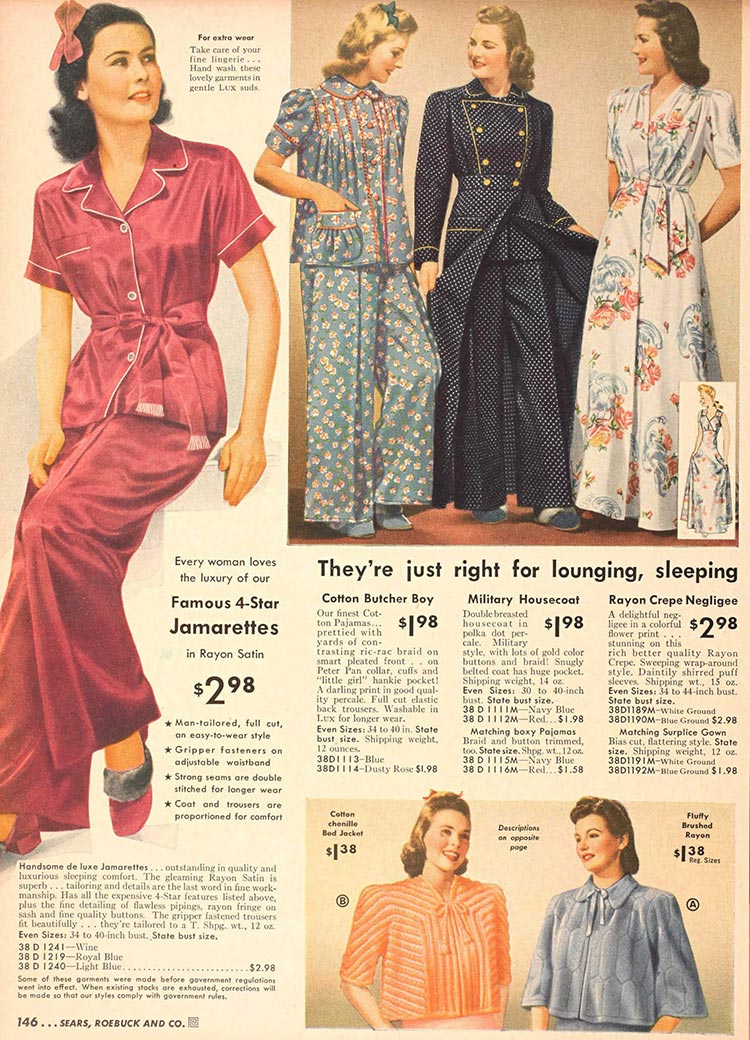

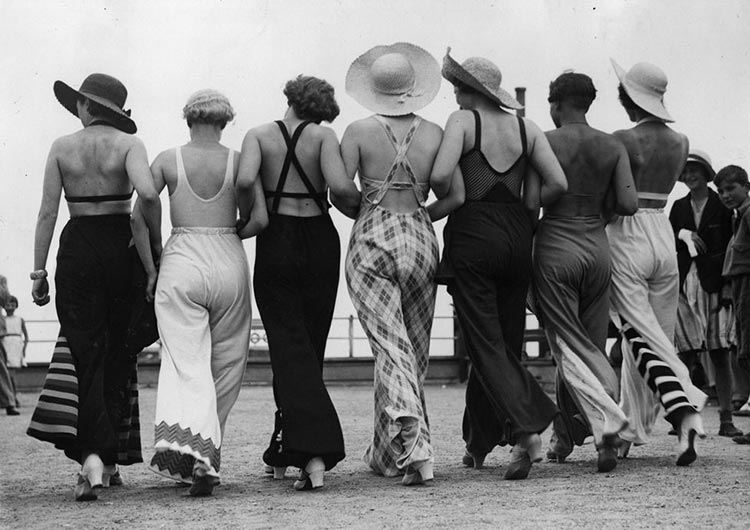
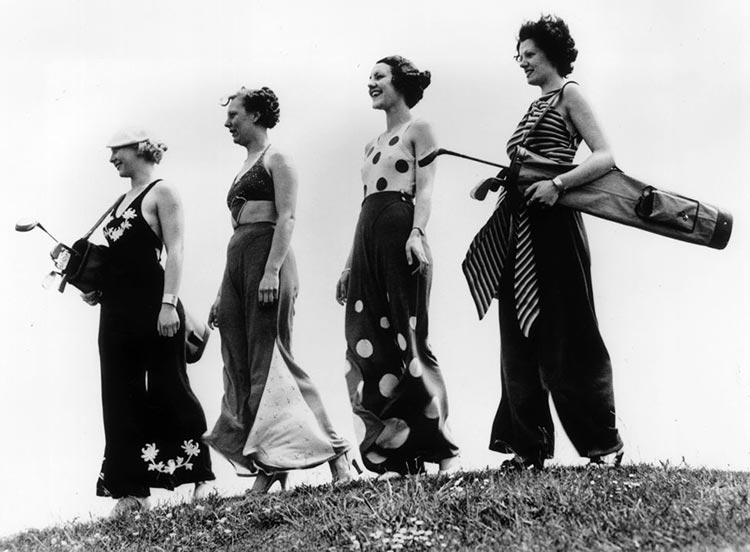

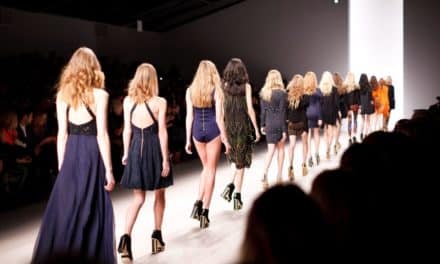
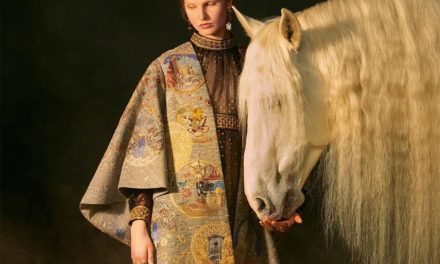
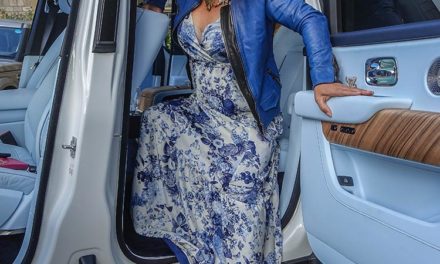








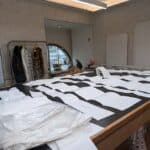

You must be logged in to post a comment.